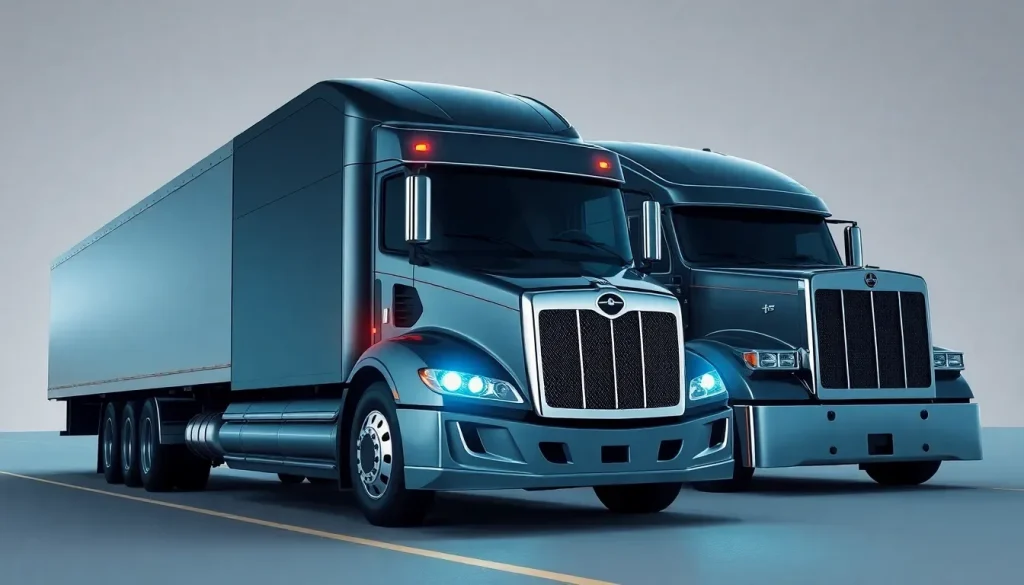Trucking fleets and OEMs anticipate challenges before improvements

The trucking industry is currently navigating through turbulent waters, marked by economic uncertainty and fluctuating demand. Understanding the underlying factors at play can help stakeholders make informed decisions as they prepare for an unpredictable future. This article delves into the current state of the trucking market, providing a comprehensive analysis of its challenges and potential recovery.
Current state of the freight market
The freight market is experiencing significant challenges. Industry executives describe it as “underperforming” and “sub-seasonal,” a reflection of escalating tariff implications and broader economic uncertainties. The anticipated normalization in new truck and trailer orders has not occurred, leading to further production cuts amidst dwindling demand.
In their recent third-quarter earnings reports, leaders from publicly traded trucking fleets and equipment manufacturers expressed a common sentiment: the industry is bracing for more hardships before seeing any recovery. They noted that the typical seasonal uptick in demand from the third to the fourth quarter is absent this year.
Adam Miller, CEO of Knight-Swift Transportation, pointed out that demand growth has lagged, revealing a stark contrast to previous years. Mark Smith, CFO of Cummins Inc., remarked on the historical significance of the decline in truck orders, suggesting it’s the sharpest drop many have witnessed outside of a severe economic downturn.
Manufacturing activity shows continued contraction
The Institute for Supply Management (ISM) has confirmed ongoing challenges in the manufacturing sector, with its latest survey indicating contraction for the eighth consecutive month in October. This aligns with the apprehensions expressed by industry leaders.
- ISM’s factory index remains below 50, which signifies contraction.
- All four demand indicators—new orders, export orders, backlog of orders, and customer inventories—are improving but still reflect a weak demand environment.
- 57% of surveyed panelists cited soft demand influenced by tariffs and uncertain economic policies.
These factors suggest that manufacturers are not only grappling with current demands but are also facing challenges in forecasting future orders, ultimately impacting the trucking sector's recovery timeline.
U.S. government shutdown's repercussions
The U.S. government shutdown that commenced on October 1 has exacerbated existing challenges within the freight industry. Beyond the chaos at airports, fleets that serve government contracts reported a marked decrease in shipments during late October.
- Delays in SNAP benefits for low-income Americans are expected to disrupt regular grocery shipments.
- The University of Michigan's consumer sentiment index dropped to its lowest level since June 2022, reflecting growing concerns about economic repercussions from the shutdown.
- Consumer confidence is crucial for the trucking industry, as it directly affects freight demand.
The uncertainty surrounding government operations has left many in the trucking industry anxious about future shipments and demand, compounding the existing sense of instability.
OEMs adjust their outlook as purchasing slows
As the trucking industry faces ongoing challenges, Original Equipment Manufacturers (OEMs) are revising their forecasts in response to a cautious approach from fleet operators. Martin Lundstedt, CEO of Volvo AB, announced a reduction in its Class 8 North American retail sales outlook for 2025, now estimating 265,000 units—10,000 less than previously projected.
Paccar’s predictions for the U.S. and Canadian Class 8 market also reflect a conservative stance. They estimate 230,000-245,000 trucks for this year and a similar range for 2026, contingent upon potential changes in environmental regulations.
In tandem with these trends, executives from various companies are noting a widespread delay in purchasing decisions, driven by:
- Stagnation in the housing market.
- Reduced household relocations.
- Persistent uncertainty surrounding consumer confidence.
Schneider has explicitly acknowledged pausing some orders originally scheduled for delivery, while Ryder System has reported similar hesitations among its clients. This slowdown in production is significantly affecting component manufacturers, who are feeling the strain from reduced demand.
Glimmers of hope amid challenges
Despite the current difficulties, some industry leaders express cautious optimism. Adam Satterfield, CFO of Old Dominion Freight Line, suggests that pent-up demand exists but will not fully surface until trade policies stabilize.
There are indications that shippers are adjusting to the current landscape by accepting modest freight rate increases to secure truck capacity. Furthermore, the eventual resolution of the government shutdown and potential interest rate cuts could provide much-needed relief.
Rusty Rush, CEO of Rush Enterprises, captured the sentiment well by stating that while he holds some optimism for the future, it may take longer than six months for a turnaround to take shape.
Future outlook for the trucking industry
The trucking industry faces a complex road ahead, impacted by various factors such as economic conditions, trade policies, and consumer behavior. While the immediate outlook appears challenging, the potential for recovery exists, contingent upon several developments:
- Stabilization of trade policies that could boost demand.
- Government measures to support economic growth and consumer confidence.
- Adaptation by fleets to changing market dynamics and consumer preferences.
As the industry navigates these uncertainties, stakeholders must remain vigilant and adaptable to thrive in an ever-evolving landscape.
For a deeper understanding of the challenges within the trucking market, you might find this video insightful:




Leave a Reply